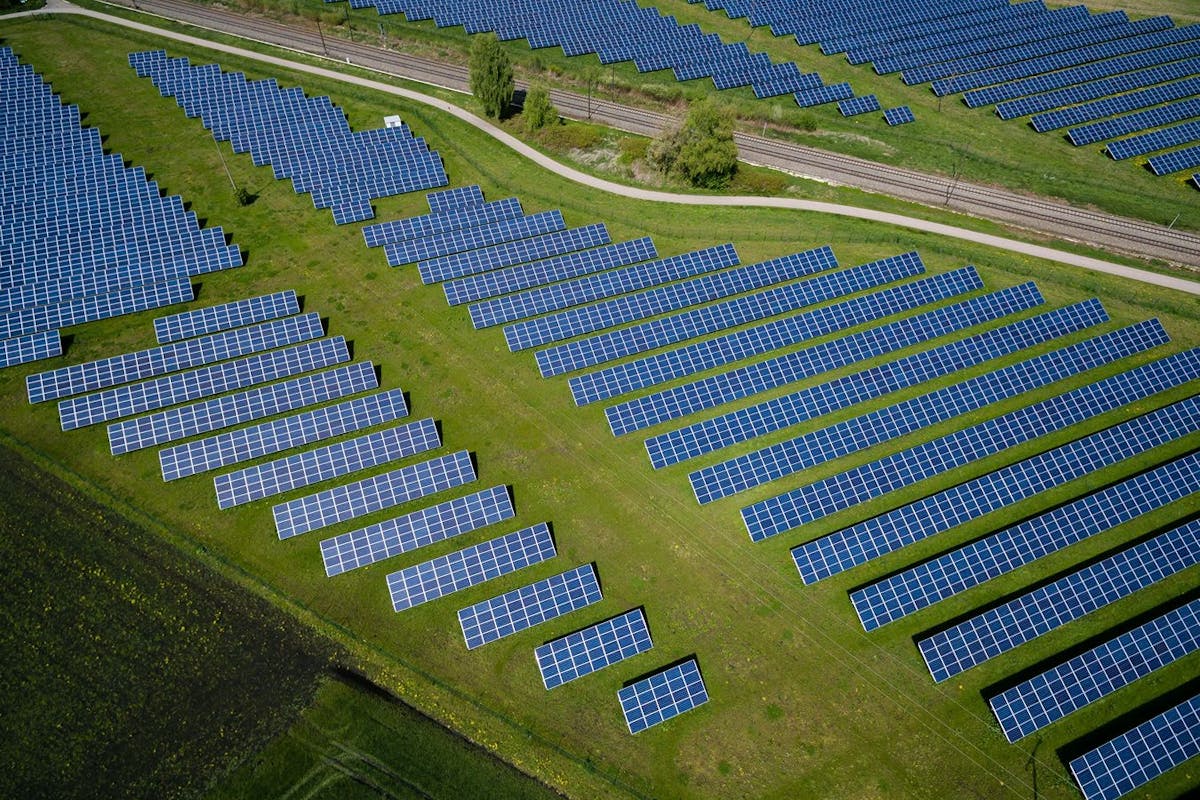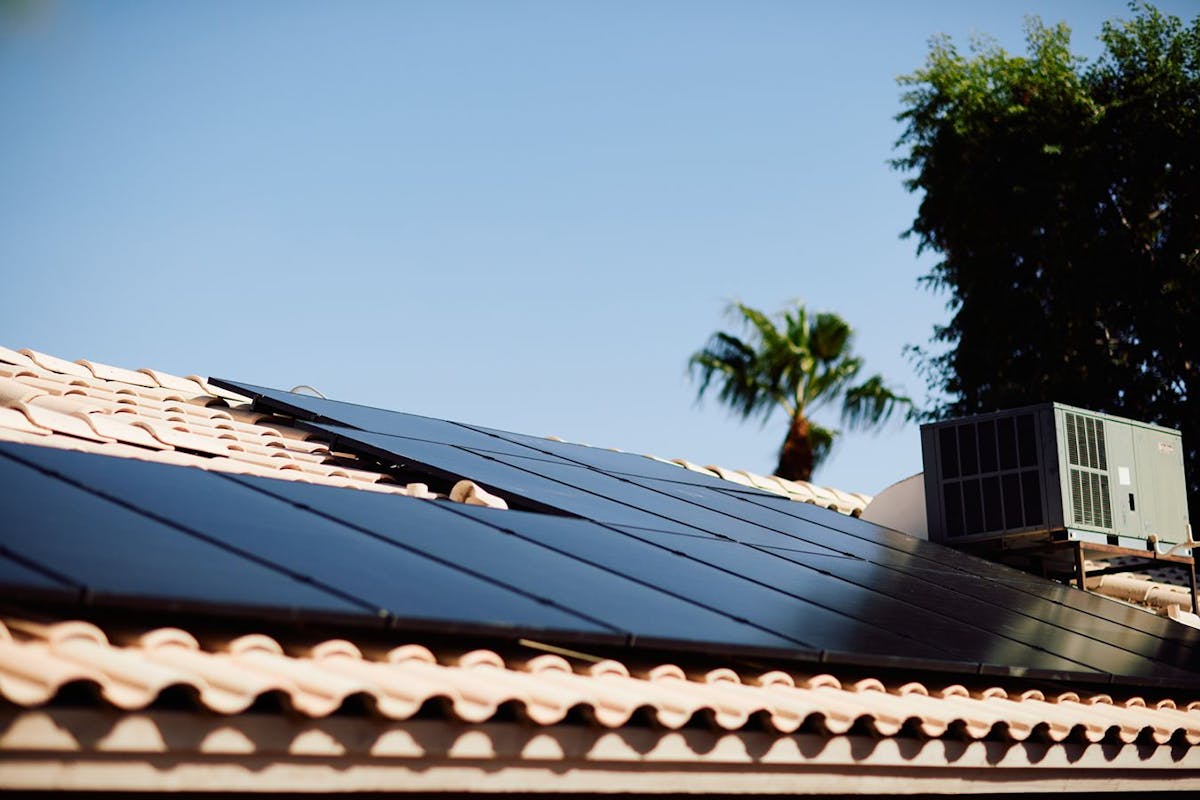Is Solar Energy Renewable Energy?
Last edited

Author
Andrew Giermak
Solar and Electrification Writer and Editor

Editor
Andrew Blok
Electrification and Solar Writer and Editor

Solar energy is clean, green, free, and practically infinite. It’s also renewable. Wind, hydro, and geothermal power are also renewable, but what does renewable actually mean? What makes solar the fastest-growing renewable energy source in the United States? What makes solar power the best fit for your home and life?
Solar energy has great environmental and economic benefits, now for millions of US homes, in large part because it’s renewable.
See how much you can save by going solar with Palmetto
What Is Renewable Energy?
First, let’s see how different sources define renewable energy.
- Merriam-Webster’s dictionary: Renewable - capable of being replaced by natural ecological cycles (ex: renewable resources)
- US Department of Energy: Renewable energy comes from unlimited, naturally replenished resources, such as the sun, tides, and wind.
- US law: Renewable energy resource - any energy resource that has recently originated in the sun, including direct and indirect solar radiation and intermediate solar energy forms such as wind, ocean thermal gradients, ocean currents and waves, hydropower, photovoltaic energy, and others.
- Scientific journals: Renewable energy - any form of energy from solar, geophysical, or biological sources that is replenished by natural processes at a rate that equals or exceeds its rate of use.
While each definition differs slightly, they all touch on energy sources that can be naturally replaced. Sometimes energy is referred to by similar but separate terms like “carbon-free” or “clean.”
- Carbon-free energy is produced by a resource that doesn’t generate any carbon emissions. Carbon dioxide gas and methane traps heat from the sun, warming the Earth and contributing to more extreme weather and pollution with harmful environmental and health impacts.
- Clean energy refers to energy that comes from both renewable and carbon-free sources that do not emit harmful emissions.
Not all carbon-free energy is renewable. For example, nuclear energy is carbon-free as it doesn’t generate greenhouse gas emissions, yet it’s not renewable as it’s fueled by finite elements like uranium.
Is Solar Renewable Energy?
Solar panels contain photovoltaic cells that absorb light particles (called photons) from the sun to generate electricity. Solar power is considered renewable because the sun is always producing photons that can be used for energy. This is different from non-renewable sources like oil or coal because their supplies are limited. Once we use them, they can not be naturally replaced (or at least not on any time scale relevant to us).
Solar is also carbon-free, clean energy because it doesn’t emit carbon emissions. While there are some environmental impacts associated with solar panels — energy consumption during manufacture, land use for solar farms, and recycling at the end of their lifespan — solar power is overwhelmingly a benefit to the environment, since it generates electricity without the greenhouse gases or other pollution of fossil fuel sources.
As solar panels become even more durable, easy to make, and recyclable, the benefits will only increase, since each panel will produce electricity for longer and less material heads to the landfill.
See how much you can save by going solar with Palmetto
How Can the Industry Increase the Benefits of Solar?
Solar panels can last about 30 years so, while most are still in use, it’s important to prepare for when millions come to the end of their life in the next few decades. Continued innovation in manufacturing solar panels will help minimize energy use and waste, while improvements in recycling will make it easier and more cost-effective to reuse materials.
While solar panel manufacturing does have some environmental impacts, once systems are installed they can create renewable energy for decades without emitting carbon dioxide. Solar can also be installed on empty roof space and brownfields that have no other use to avoid displacing wildlife or using land valuable for other purposes. In all, the positive environmental impacts of solar energy greatly outweigh any negative results from their manufacturing.

Credit: National Renewable Energy Lab
What Are Other Renewable Energy Sources?
Solar isn’t the only source of renewable energy. Here are some other examples.
- Wind: Wind turbines harness and convert the kinetic energy from air currents into electricity.
- Geothermal: The Earth’s decay of radioactive elements causes underground heat that can be converted into energy using fractures, wells, and turbines.
- Hydropower: Turbines can also use the natural flow of moving water to generate electricity.
These sources of renewable energy can be used to generate electricity, heat and cool buildings and transport goods and people. Renewable energy generates about 24% of all U.S. electricity in 2025 according to projections from the US Energy Information Administration, and that percentage continues to grow.
Why Is Renewable Energy Important?
Using more renewable energy and retiring fossil fuel power plants will reduce the amount of carbon dioxide and other harmful greenhouse gases released into the atmosphere. This is important to slowing the effects of climate change while also avoiding air pollution for better community health.
Cheap sources of renewables like solar can also reduce electric bills to help homeowners and businesses save money. When paired with a battery storage system, solar can also help keep the lights on during power outages.
The many benefits of renewable energy are why millions of households have switched to home solar power. By understanding the facts of solar energy, you can make an educated choice to do what’s best for the environment, and your wallet, too. To take the next step in going solar at home, you can use our free solar savings calculator.
See what solar can do for you:
Renewable Energy FAQs
Is solar energy renewable?
Solar is a renewable energy resource because it is generated using an endless source of photons, which are light particles from the sun.
Why is carbon-free energy important?
Carbon dioxide is a harmful greenhouse gas because it traps heat, which contributes to global warming. Burning fossil fuels for energy also produces other types of harmful air pollution, too. The effects of climate change include more extreme weather, sea level rise, and other negative impacts on the environment and human well-being. Using resources that don’t emit carbon can help us avoid the worst effects of climate change and reduce health issues associated with air pollution.
What is green power?
Green power is a term similar to renewable energy but is used for energy resources that provide the most environmental benefits. Sources like solar and wind are considered green power in the U.S.
What is conventional power?
Conventional power includes fossil fuels like coal, natural gas, and oil, which have traditionally been used as electricity resources. Fossil fuels require mining, drilling, or extracting and emit greenhouse gasses during combustion.


